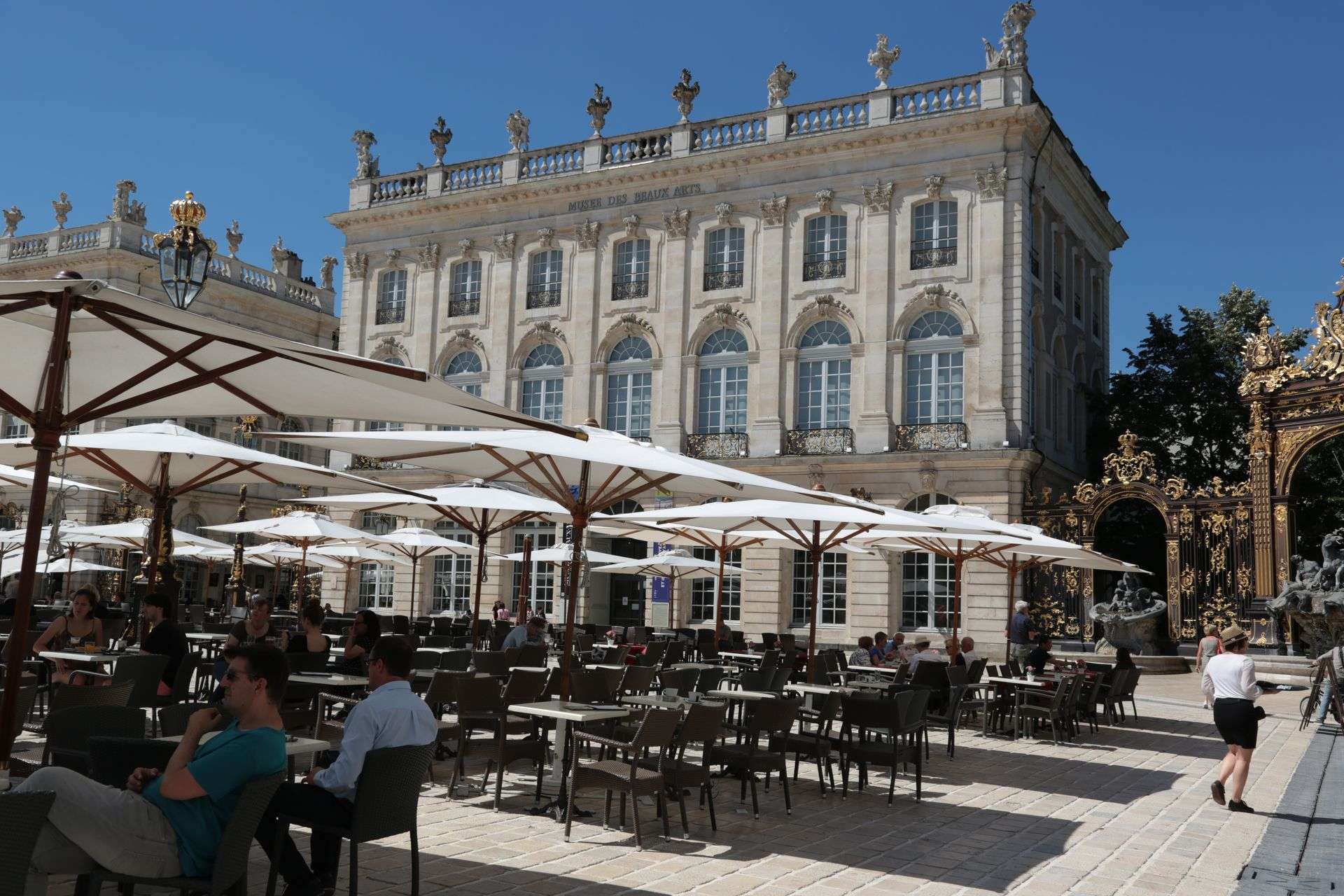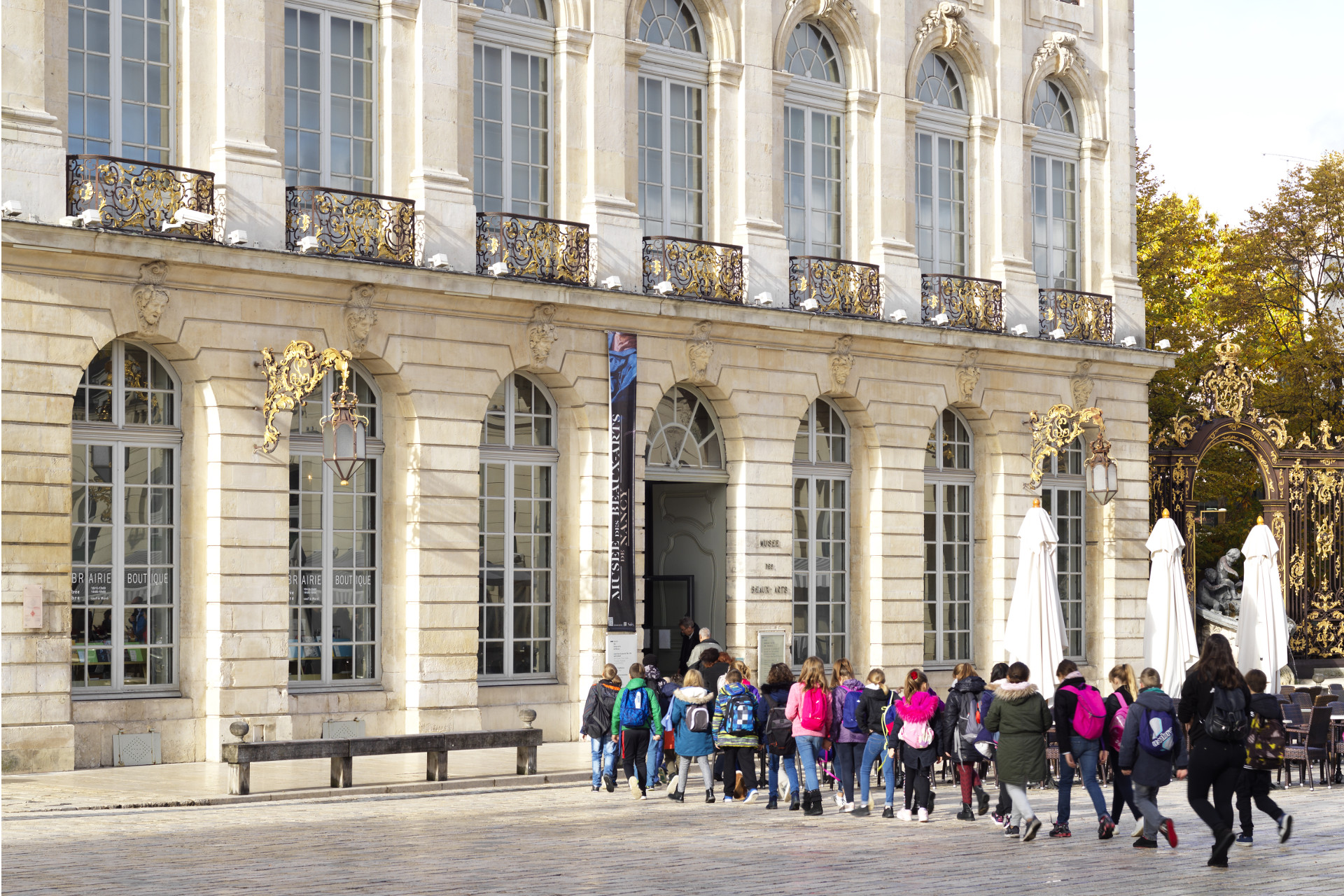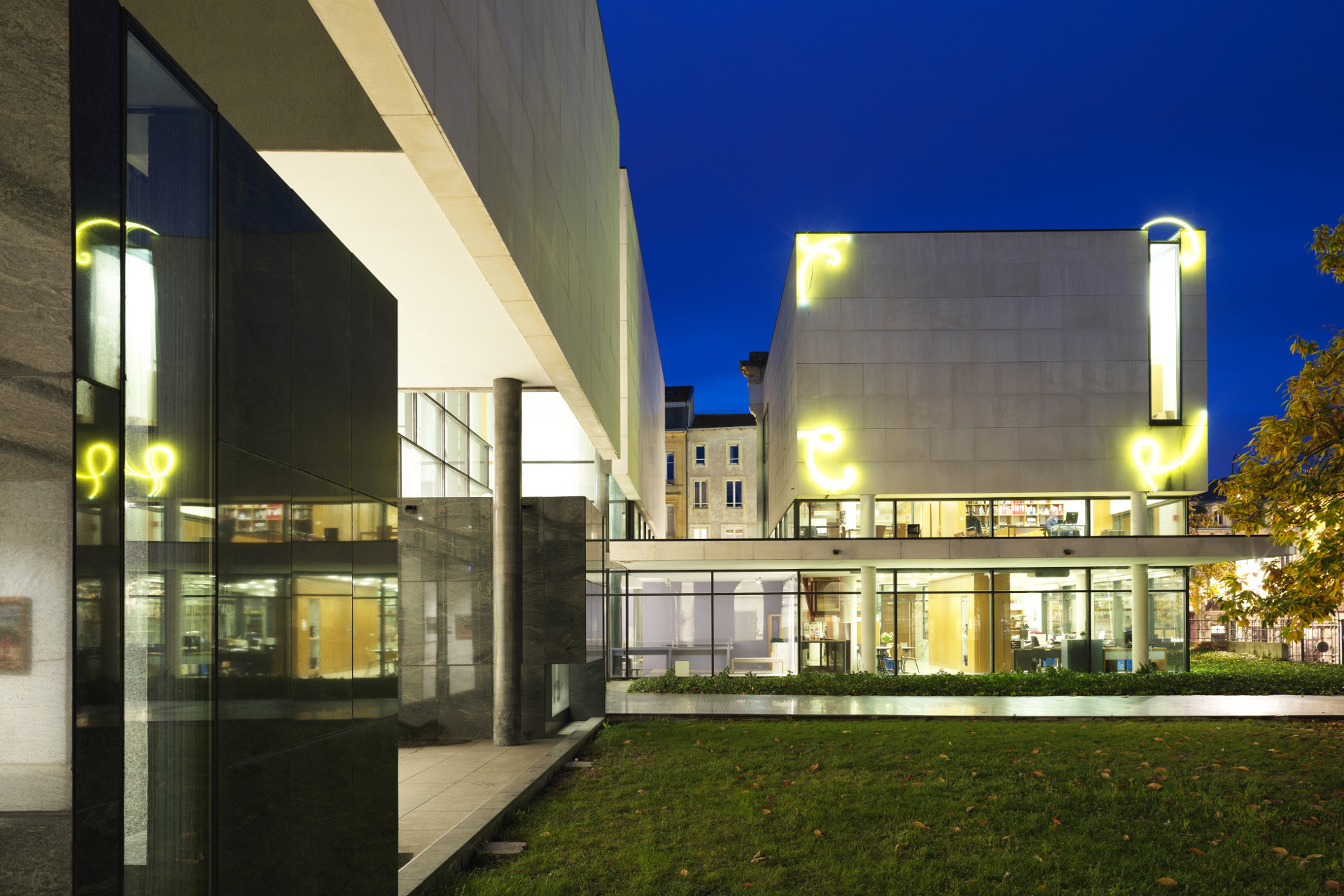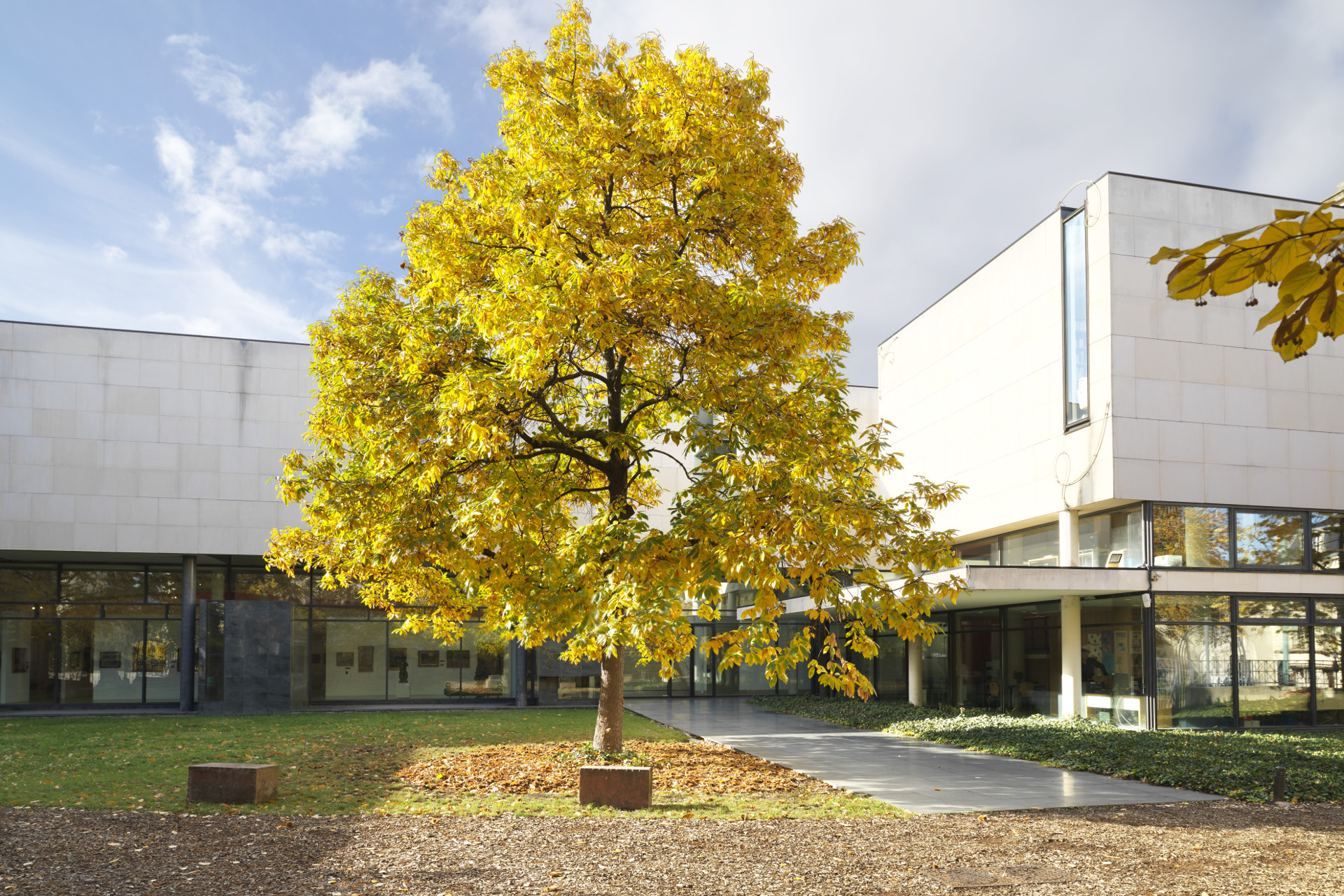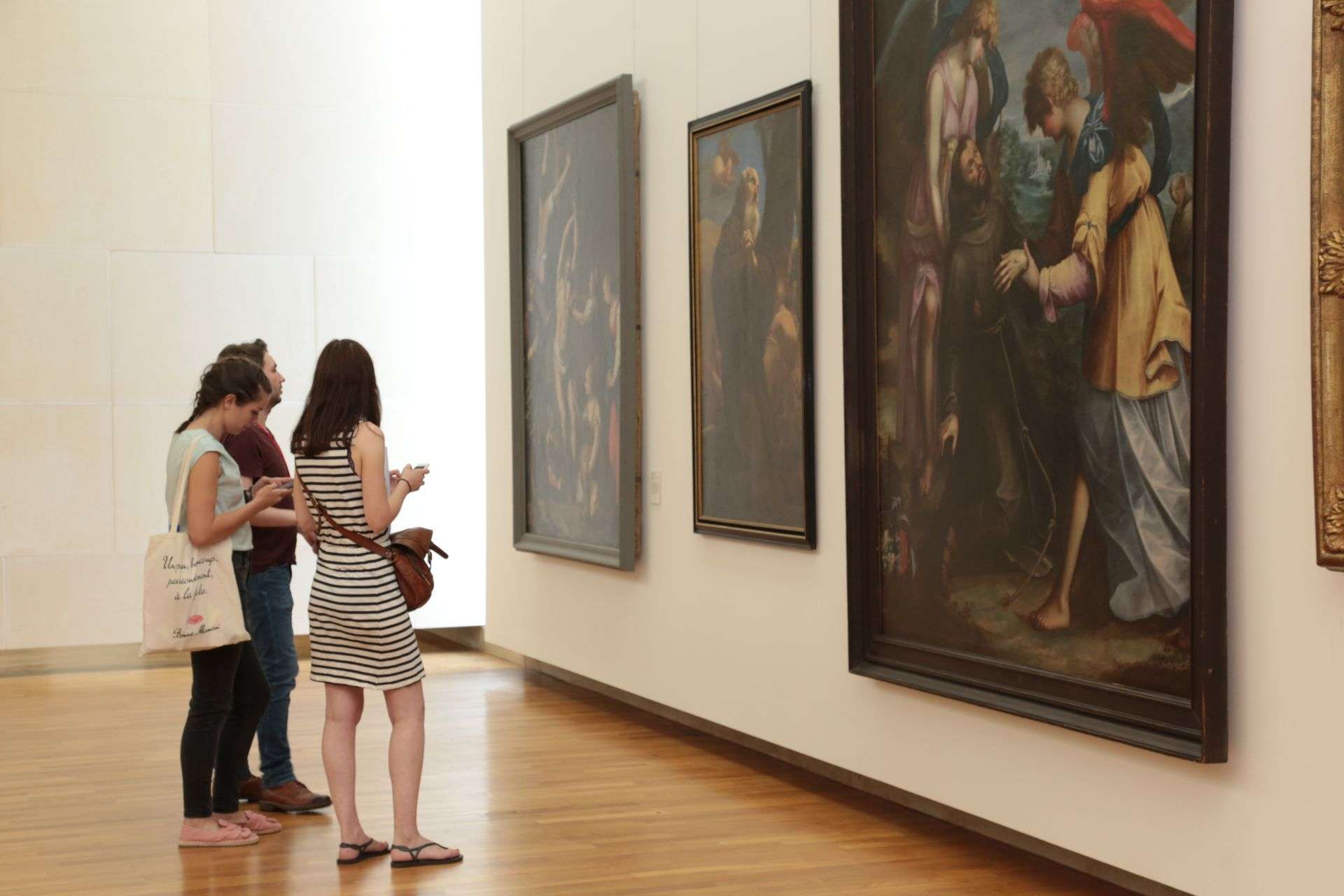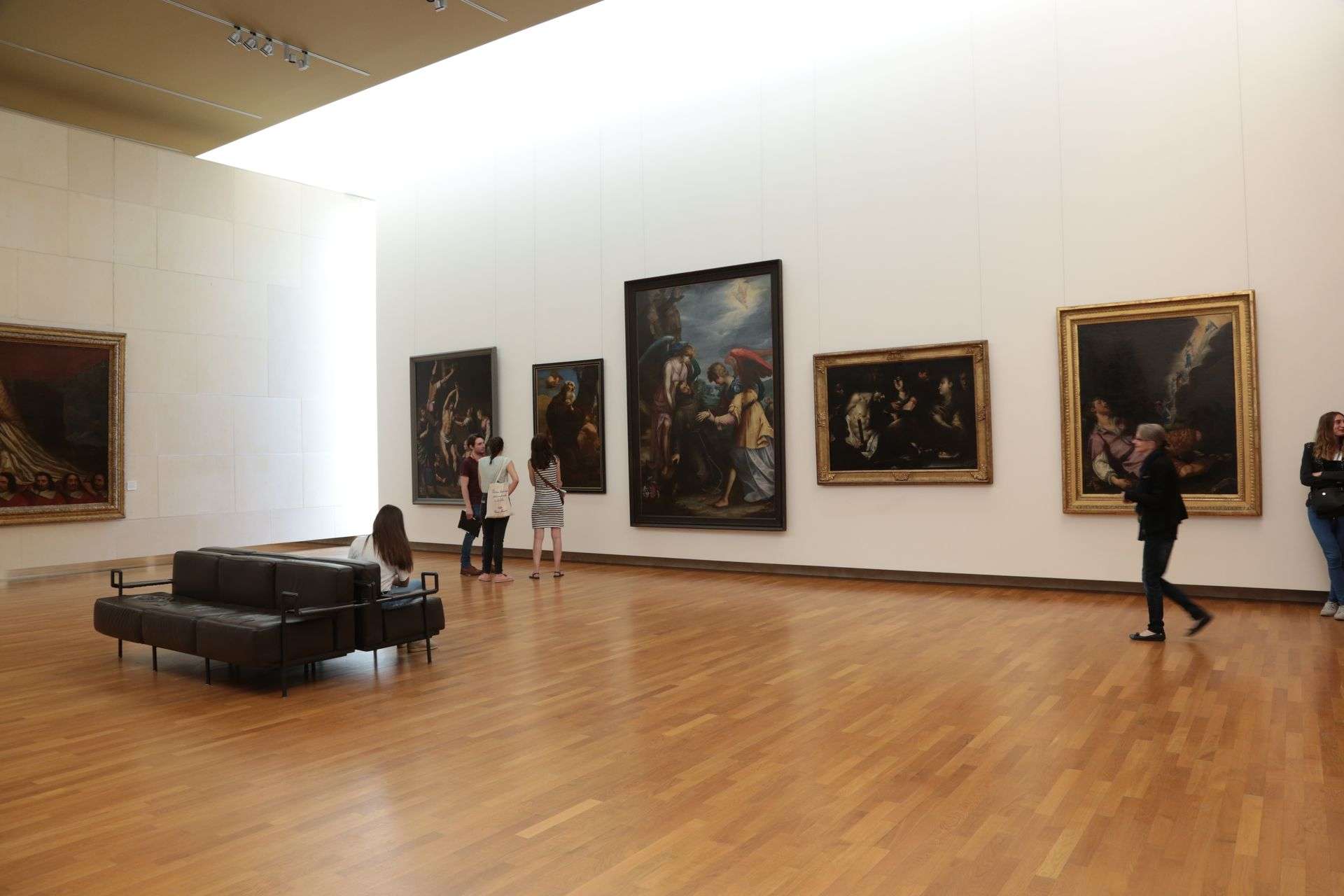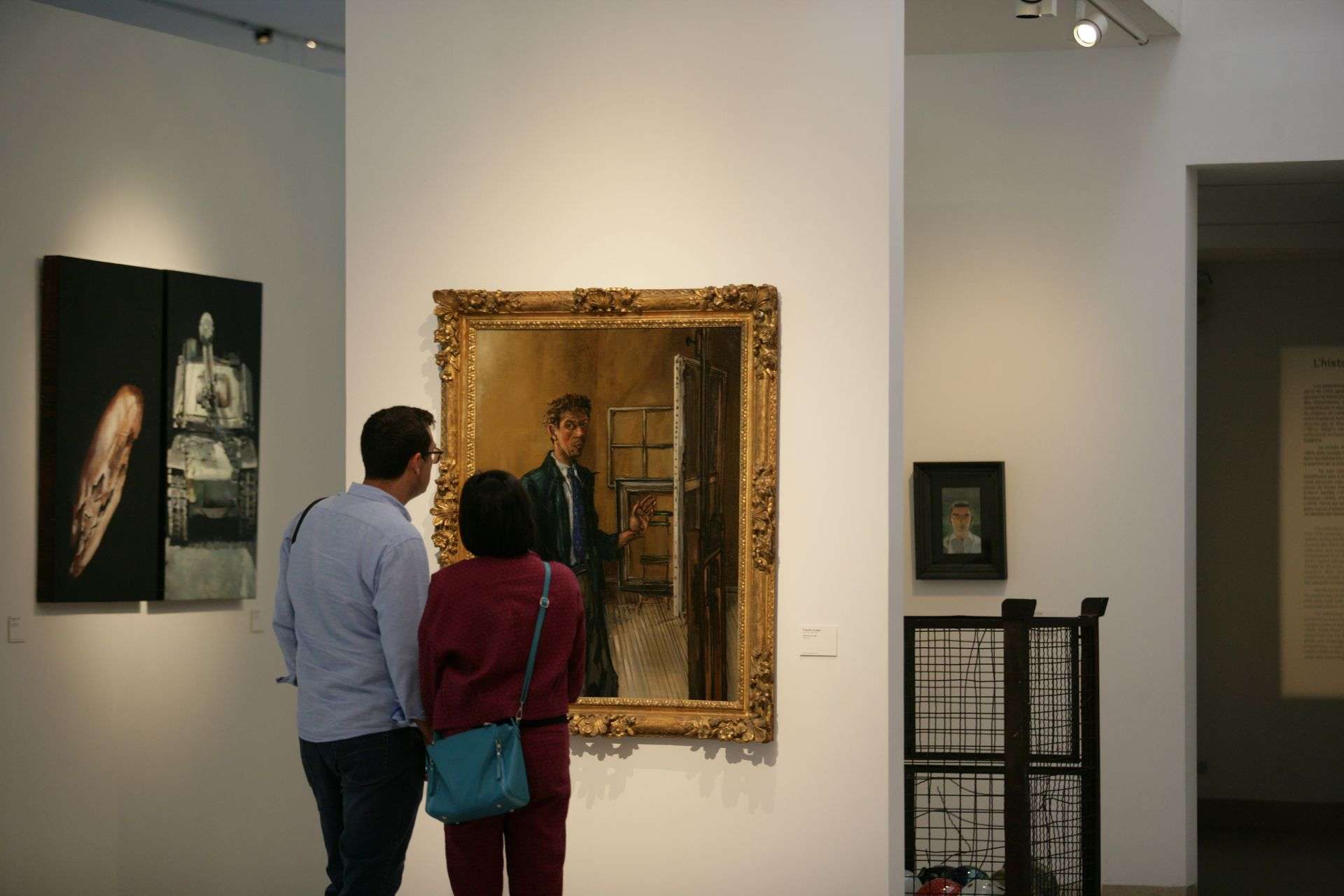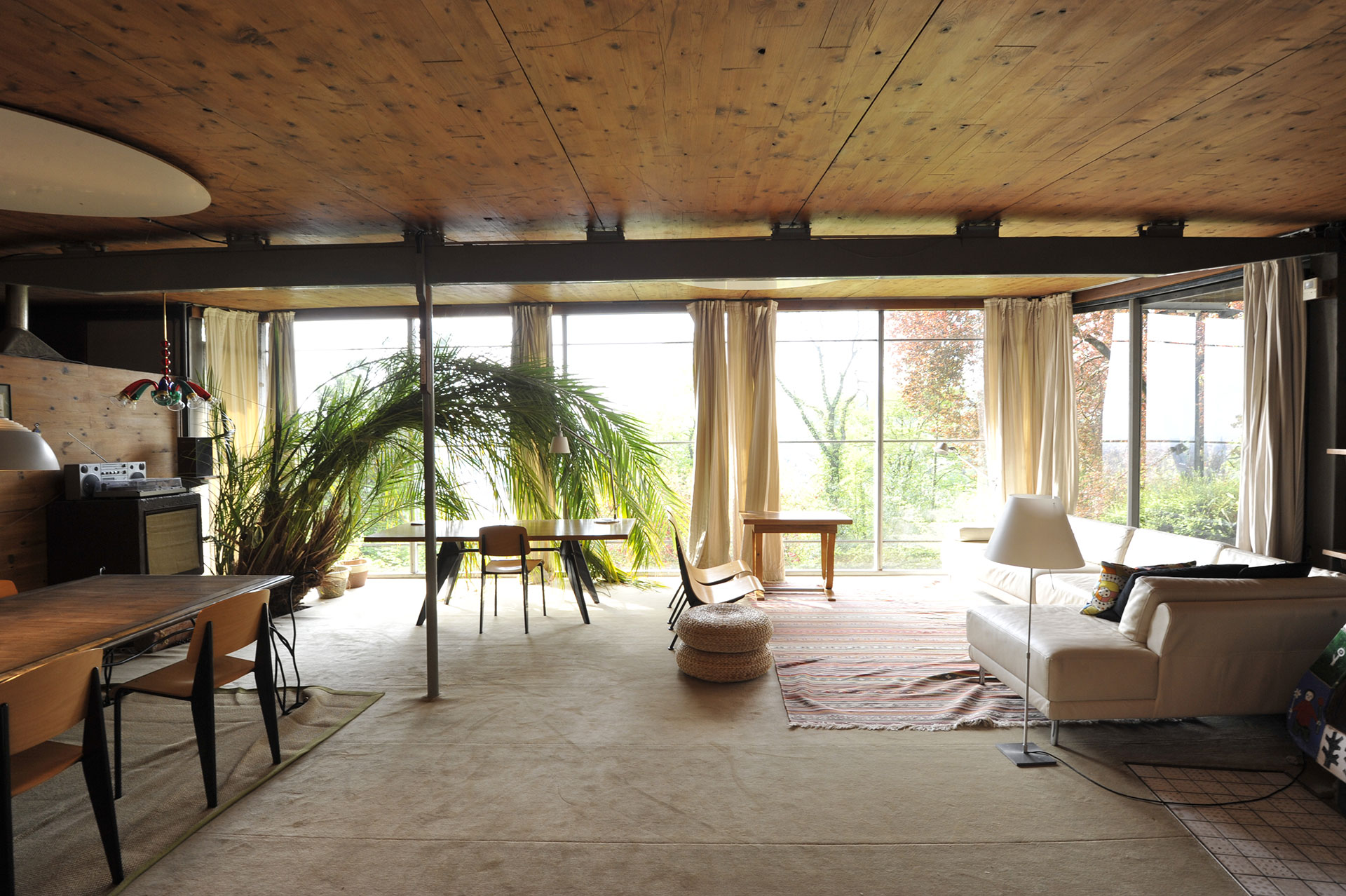The Museum
From its position on the Place Stanislas, the musée des Beaux-Arts de Nancy is one of the leading centres of Nancy’s cultural life. The museum contains some of the greatest names in the history of European art: Perugino, Caravaggio, Rubens and Delacroix. Its 20th Century collections are particularly rich, including the decorative glasswork from the Daum collection, on exhibition in the setting of Nancy’s ancient fortifications, and the room dedicated to the constructor Jean Prouvé.
Established in an 18th Century pavilion
Established in an 18th Century pavilion
The museum is in an 18th Century pavilion, part of an outstanding architectural ensemble designed by Emmanuel Héré, architect to King Stanislas. As visitors enter the pavilion, they discover the quality of the peristyle with its coloured stucco and the staircase, a magnificent example of interior architecture decorated with ironwork designed by Jean Lamour. This leads into the bookshop and opens out onto the ground floor of an initial extension carried out in 1936 by Jacques and Michel André.
Reinvented in the 21st Century
A second extension in 1999 doubled the museum’s surface area. A series of new spaces were designed for the public: an auditorium, temporary exhibition rooms, a graphic arts department, a documentation centre and a children’s workshop. The project was awarded to Laurent Beaudouin, who, with his team, produced a resolutely contemporary design while remaining in keeping with the outstanding environment of Place Stanislas.
In 2011, major works were undertaken under the direction of the architect Luca Lotti. As a result, a new visitor itinerary was put in place to incorporate a room dedicated to the metalworker and designer Jean Prouvé, who was born in Nancy.
In the basement, the remains of the city fortifications (15th to 17th Centuries) immerse visitors in the history of the former Duchy of Lorraine and house a spectacular display of the famous Daum collection of decorative glasswork.
How the collections were formed: works confiscated during the Revolution
How the collections were formed: works confiscated during the Revolution
Church property was confiscated during the French Revolution. These seizures were to form the nucleus of the museum collections. In Nancy, the paintings were initially from Lorraine, including those by Bellange. Then came 17th Century Italy illustrated by Caravaggio, Reni and Morandi, testimonies to the close links between the Duchy of Lorraine and the Italian Duchies and the papacy. The Northern schools were also represented by Séghers.
The seizure of property owned by emigrants who fled France and its revolution added to the ranks of the so-called minor genres, largely dominated by landscapes, still life paintings and portraits by French artists such as Girardet, Claudot, Vallayer and painters from the Northern schools, including Jordaens and Lievens.
How the collections were formed: works sent by the Consulate
On the signature of the peace treaty between France and Austria at the château de Lunéville (1801), Bonaparte sent a selection of 30 paintings from what is now the Louvre Museum (Central Museum). After the festivities, the Meurthe department claimed these works for its museum: the First Consul agreed to this request. As a result, prior to the Chaptal decree of 1st September 1801, the Nancy Museum received a superb ensemble of French paintings from the 18th Century: Boucher, Lemoyne, De Troy, Van Loo and Vouet for the 17th Century.
The Chaptal decree of 1st September 1801 was a founding moment for all the provincial museums. The government dispatched works throughout the country that had come from the nationalisation of church property, the confiscation of emigrant property or the seizures carried out by the French armies, particularly in Italy. In Nancy, the first batch consisted of 44 paintings. Most came from France, from the royal collections, seizures from noble properties, the Academy of painting and sculpture or the churches of Paris. Other works came from French conquests between 1794 and 1799: this batch showed evidence of an encyclopaedic approach as it contained examples of paintings from every school and from different periods. The French and Italian schools were most fully represented, followed by the Flemish school: Champaigne, Perugino, Cigoli,Rubens and van Hemessen.

